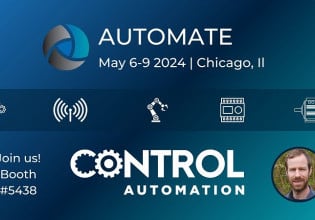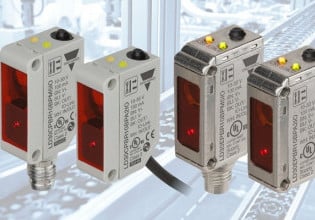Emerson Adds IO-Link Master To Aventics Platform
Emerson expands their G3 Fieldbus remote I/O platform to include a class A IO-Link master for expanded I/O possibilities.
Aventics G3 Platform
Many automation component manufacturers offer a remote I/O platform. These platforms allow designers to assemble different input and output cards onto a single backplane. The Aventics Platform, Emerson's remote I/O offering, is taking remote I/O one step further by adding pneumatic valves directly on the I/O rack. This feature allows machine builders to custom-build one interface for electric I/O and pneumatic control.

Emerson adds a class A IO-Link master to its list of modules, opening up the platform to a larger selection of sensors and devices. Image courtesy used courtesy of Emerson.
According to the company, the G3 I/O platform accommodates different field bus communication protocols with a variety of different modules such as EtherCAT, DeviceNet, ProfiNet, and Profibus. Emerson also adds a class A IO-Link master to the list of modules available to the G3 platform thus opening up the platform to a larger selection of sensors and devices.
G3 IO-Link Master
IO-Link is an industrial protocol at the device level that facilitates additional data and configurations to be transmitted or received to or from the control system. Typically IO-Link masters offer connections to familiar Fieldbus technologies such as Ethernet/IP, EtherCAT, or ProfiNet.
Emerson explains the class A IO-Link master allows for each port to have additional functions such as output, input, or even controlling high-current devices. The G3 IO-Link master comes with eight ports and supports multiple IO-Link smart sensors which allow up to 50 meters per G3 communication module. IO-Link masters can even be daisy-chained together or added to the same backplane. The G3 comes with an integrated graphic display for commissioning and visual status of each module.
The G3 IO-Link master comes standard with an ARM (auto recovery module) which maintains configuration in the event of a critical failure. Some modules also contain a wireless ARM which facilitates system diagnostics and monitoring features over a wireless connection. Separate ports for power allow for a loss of supply power while communication and inputs remain active. This feature can assist maintenance in the detection of blown fuses or power disconnects.

Emerson notes its remote I/O is perfect for robotic applications, including this warhead containerization system at a pilot chemical weapon destruction site. Image used courtesy of Wikimedia.
Ready for Innovative Applications
The IO-Link standard has opened doors for machine builders and integrators that weren’t possible before. With smart IO-Link sensors configurations can be changed on the fly or during re-integeration.
Diagnostic information can be displayed directly on the HMI for supervisors and maintenance staff. Large amounts of digital input and outputs can be implemented on one network node in a compact footprint. The benefits of IO-Link are very important when designing or building equipment or processes in a modular form.
Great for Robotics
A great application for IO-Link masters is robots and robotic systems. Potentially, a single robot can have multiple inputs and outputs to the end effector; however, there is a finite number of conductors that are installed in a robot for gripper functions.
By placing an IO-Link master on the shoulder of a robot, notes Emerson, and using the conductors for Ethernet and power, one can add hundreds of inputs and outputs. With the Emerson Aventics G3 Platform not only can you have digital input and outputs plus IO-Link masters for smart sensors, but you can also control pneumatic valves from the same ethernet node.






